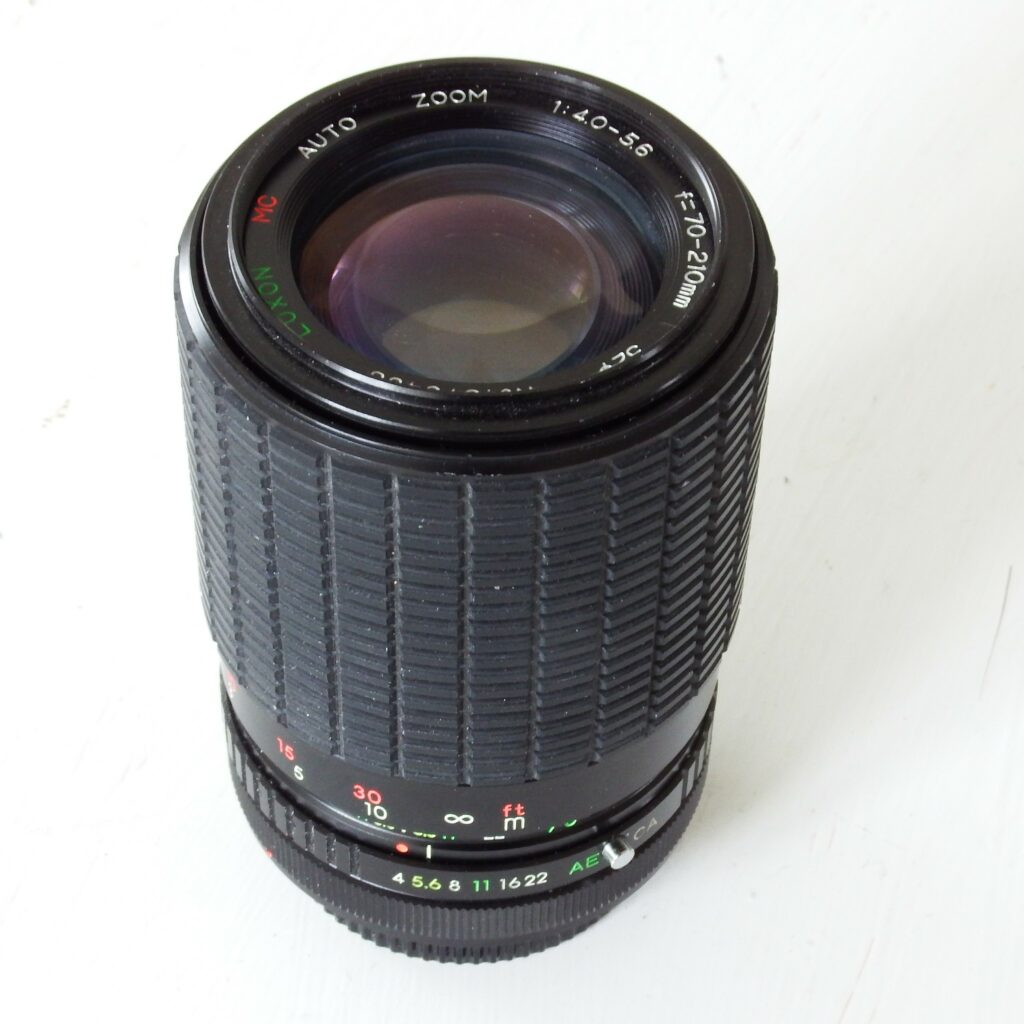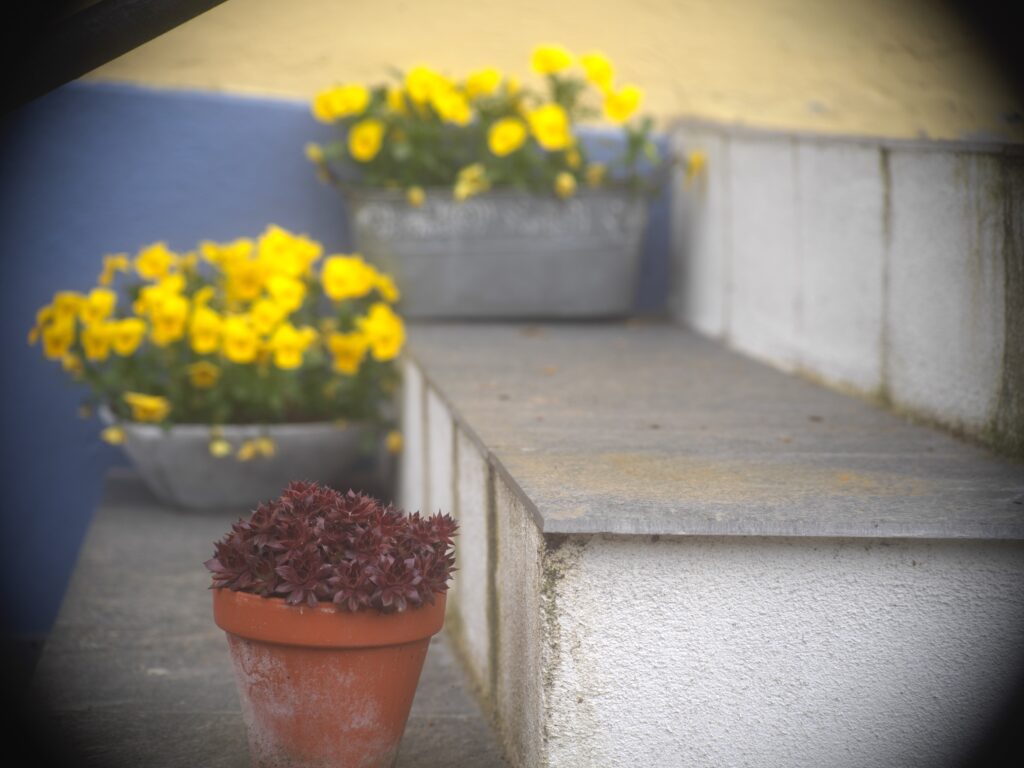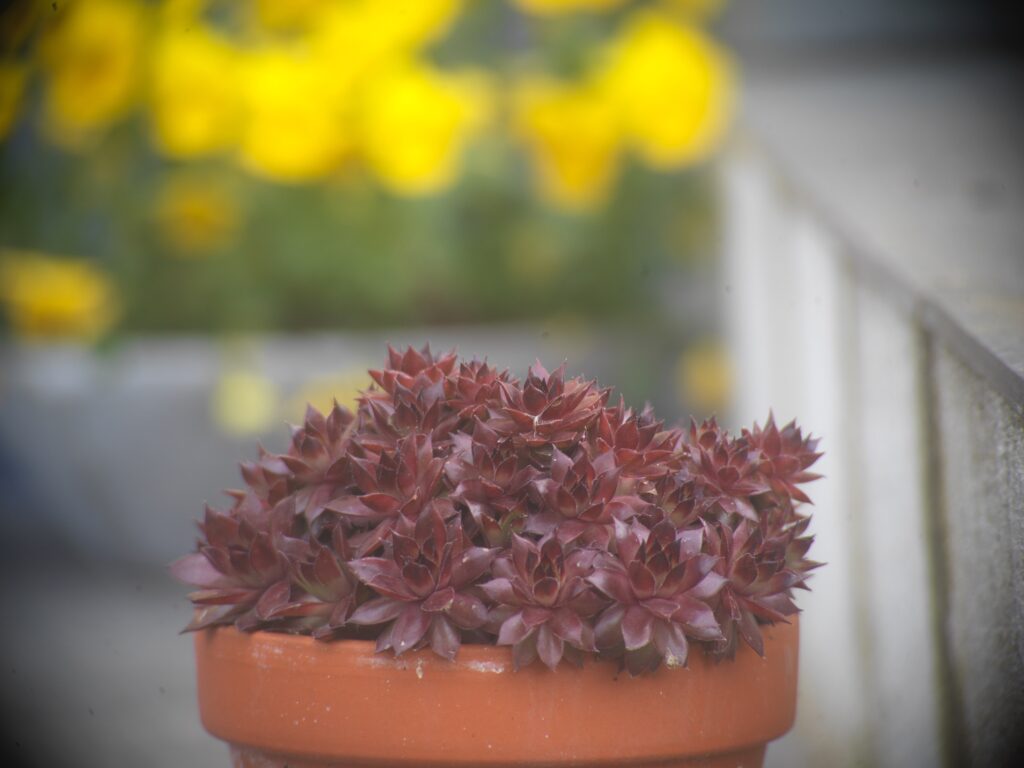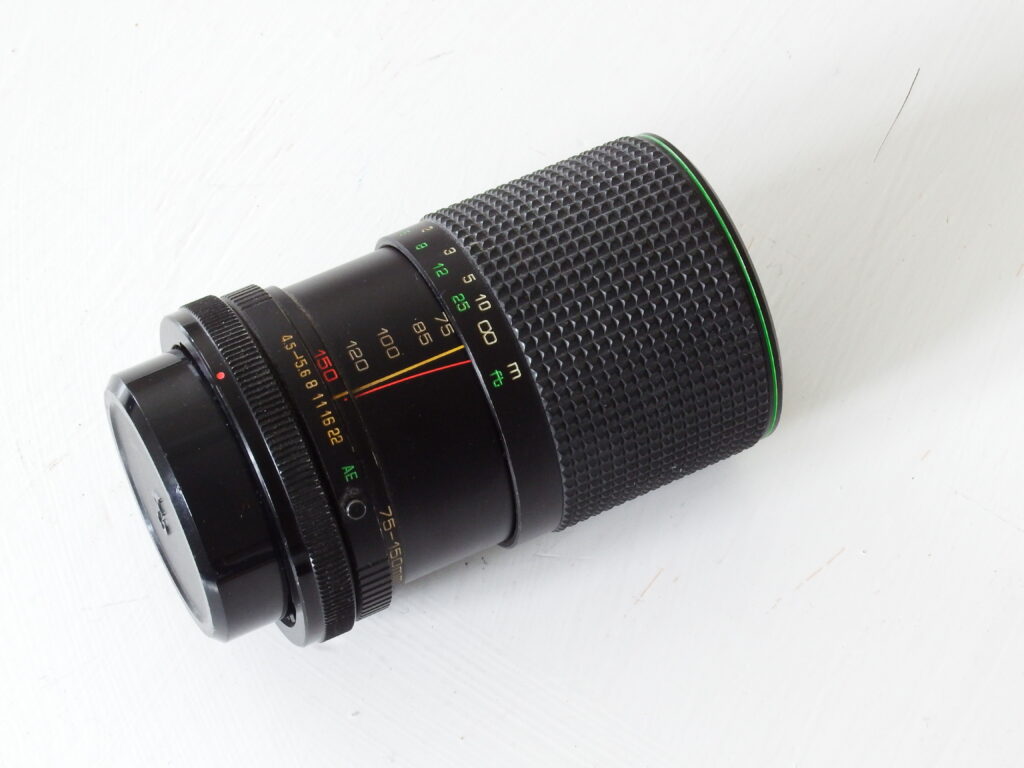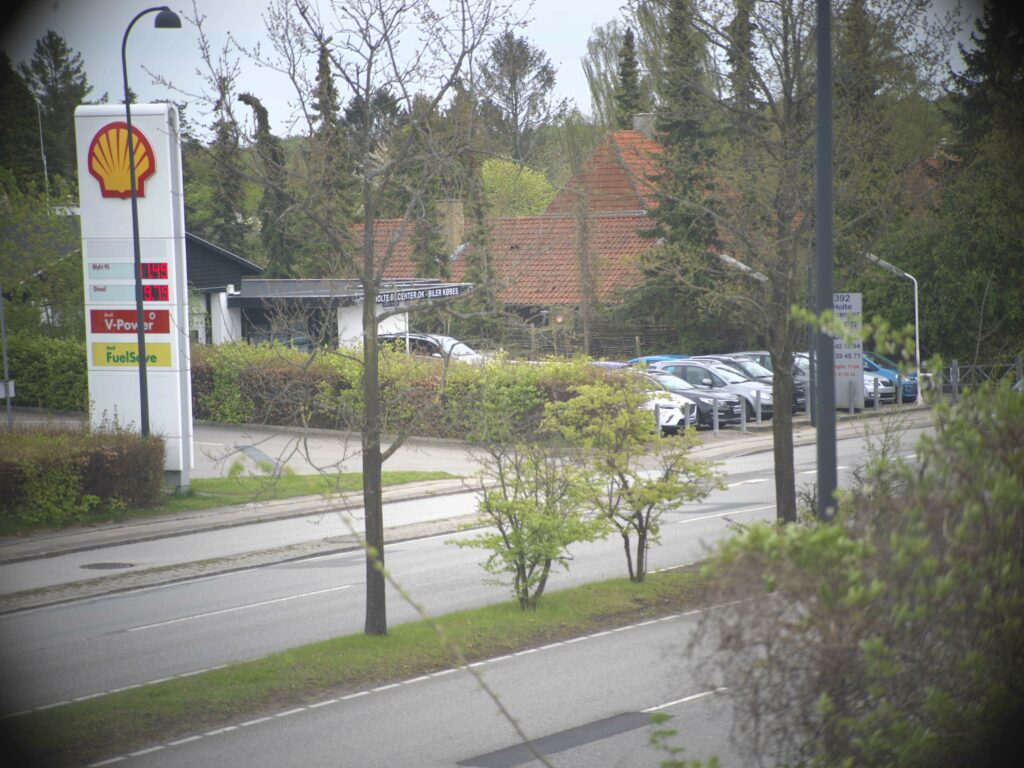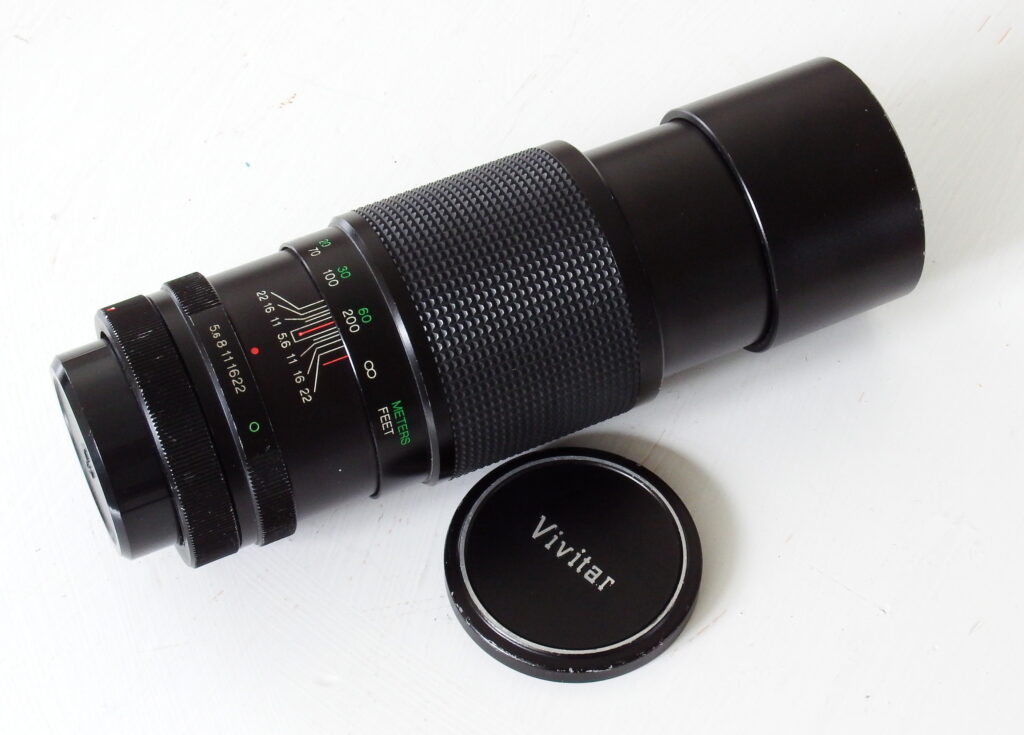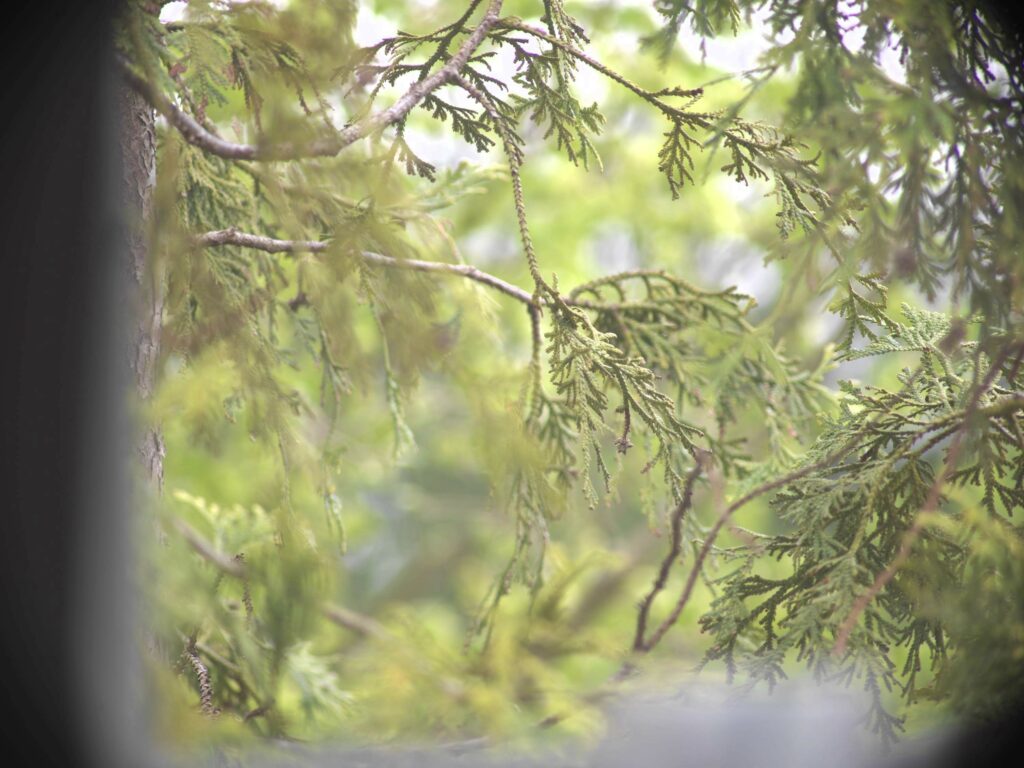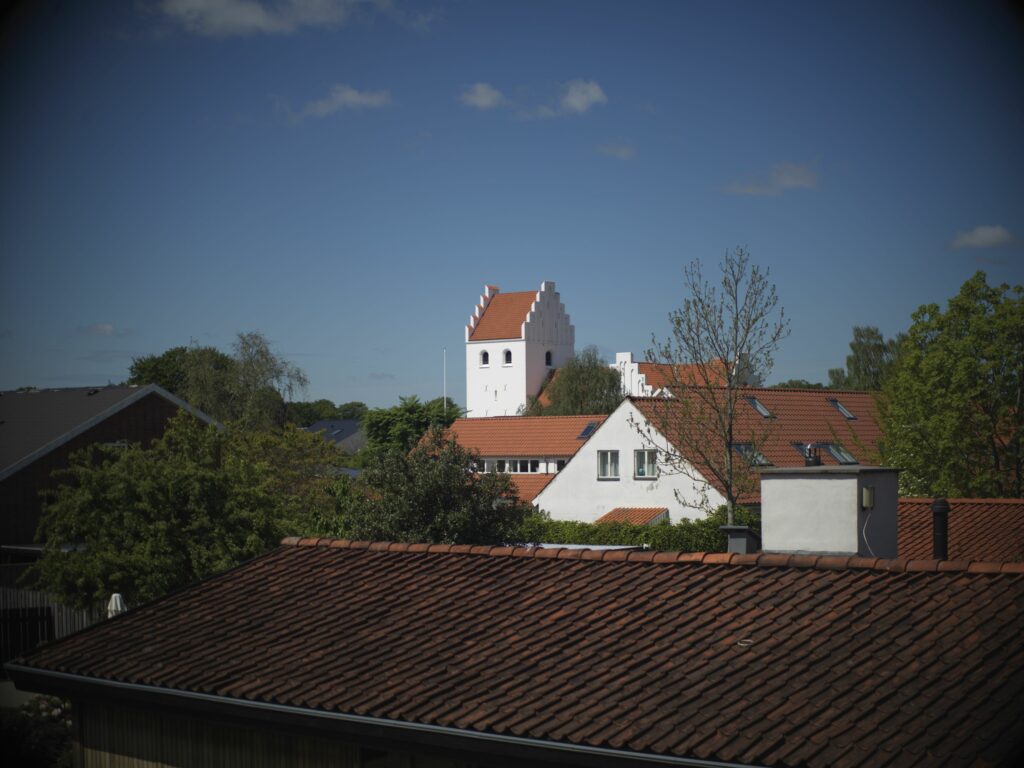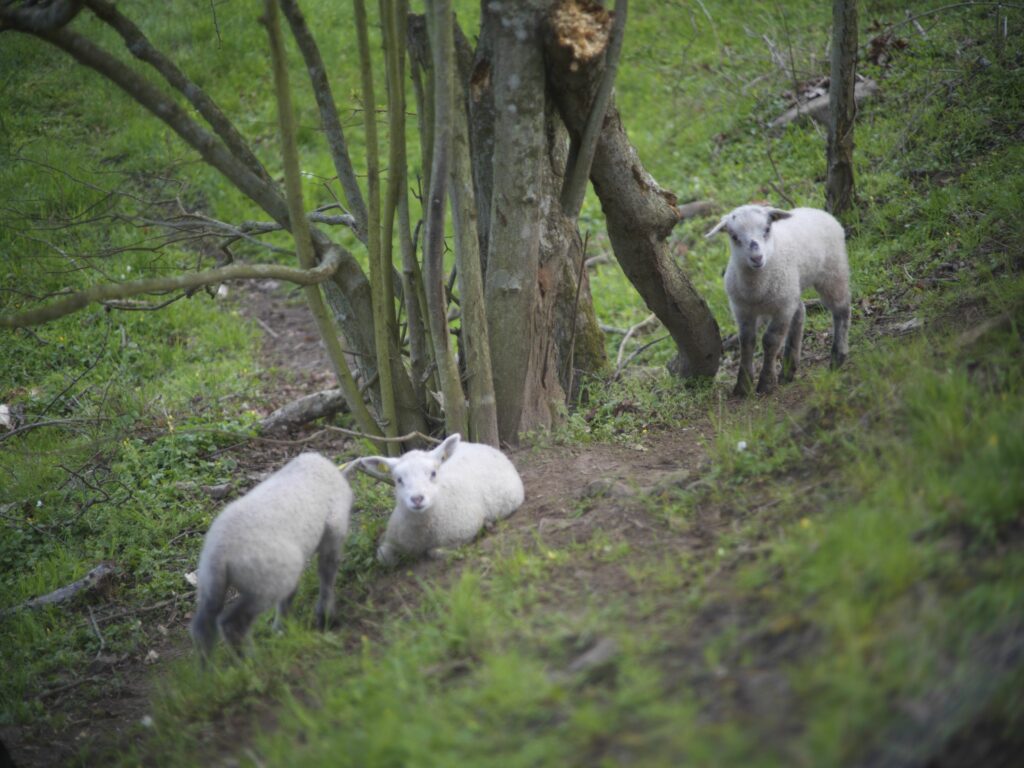In the first installment of the review of vintage lenses shot on the formidable Hasselblad X1D 50c II, I reviewed all the Canon FD lenses, that I have my two old Canon cameras, the Canon A-1 and the Canon F-1. The results were mixed, but none the less there was some interesting lenses between the tested specimens. Some of these have become a permanent part of my usual Hasselblad equipment, that I take for shoots, on holiday etc. You con read the first article in this series here: Adapted lenses test#1: Canon FD on Hasselblad X1D 50c II
The results achieved with these lenses should also apply for the medium format cameras from Fujifilm, the GFX series of cameras, as these use the same sensor in the 50 mpx series of cameras and use the same sensor size in their 100 mpx models.
Having found that even some of the otherwise famed Canon lenses failed to satisfy my needs, I was convinced that most no-brand, or as I call it the title of this article “low brands”, would not find place in my camera bag in the future. I have only done some initial testing for most of the lenses, I wish to review thoroughly, but already I have found some that give interesting and useful results.
I most mention two things before getting into the details. I have been shooting the Hasselblad camera in different manners since I wrote last review article. Therefore, I have changed my attitude to some of the flaws I saw in the lenses, I reviewed earlier. What has had the most effect is, that I have written a book on Panoramic Images. Shooting the Hasselblad in the socalled X-Pan mode to get a panoramic image, I actually cropped out the corners of the full image, thereby avoiding the sometimes heavy and hard non-removable vignette, that some of the Canon lenses showed. That attitude will be applied during the testing of the low brand lenses. Another change is, that I have refound a great interest for shooting analog film, and liking the look of film, old cameras, and lenses makes it easy to love a more vintage like look. That change of approach will lead to a different view of what I regarded as unacceptable flaws during my first review. Nevertheless, I will still describe the true characteristics that I find, but also take a view into how eventual flaws can be used in an artistic way.
So without further ado lets have a look at the non/low brand lenses for this installment of my review.
I promised in the first review to review a number of lenses, but the list have changed since then leaving some out, but also adding some new. This is due to the fact, that initial testing have made me discard some, and due to the fact that I now have adapters for other lenses than those fitting the old Canon FD mount. Therefore I am able to review lenses with Leica M, 42mm screw, Olympus OM, Canon EF, Nikon F mounts as well as lenses for the old analog Hasselblad 500 series cameras. And I have a lot of lenses, but only a few of the mentioned brands/mounts will appear in this second review. Otherwise, this article would end up much too long. I’ll have to save some for future reviews, and I’m saving the real fine brands for later, mostly because I find it quite interesting to shoot some really low cost lenses, and sometimes finding hidden gems.
The lineup for this review
I have decided on the following pretty long lenses for this part of the series:
- Luxon 70-210mm f4-5.6
- Hanimex 75-150mm f4.5
- Vivitar 300mm f5.6
- Tamron 80-210mm f3.8-4.0
- Kenlock 135mm f2.8
All lenses are from third party producers i.e. non camera manufacturers, at least not nowadays as I know that at least Hanimex once made cameras – I own a Hanimex point and shoot. All lenses are long to pretty long telephoto lenses, and, except for two, are all zoom lenses produced between 1970 and 1995
I my next article in this series I will be investigating some of the more famed lenses from brand names like the camera and lens manufacturers Olympus, Leica, and a specific lens from Canon as the biggest cliffhanger, the famous Canon FD 85mm f1.4.
Luxon 70-210mm f4-5.6
First lens in this lineup, the Luxon 70-210mm. This is an early product from China, before China became a major producer of camera and electronics equipment, and I definetely didn’t expect much from this lens. Setting it up for shooting in my backyard I immediately noticed that the vignetting was much less than many of the Canon lenses that I had tested for the first article in this series. Already a promising result, but more good was to come. After shooting with the lens, and when looking at the photos in Hasselblads Phocus editing software, I liked what I saw.
Yes there is a vignette, a very pronounced one, but not one that cannot be removed or at least made almost invisible, so I don’t care about it. Remember also that the Hasselblad camera has a 3:4 aspect ratio, and if you crop in on the images to achieve a 2:3 aspect ratio like on “full frame” cameras, most if not all of the vignette will be gone. Sharpness at 70mm is fine in the middle already at f4 but clearly improves to my second shooting aperture at f11. In the corners the sharpness is just OK at both f4 and f11. Shot at 210mm the results are mostly the same as at 70mm.
Where this cheap lens amazes is it rendering of background blur. I really like the look of the flowers in the background on my images shot at 210mm.
But what is even more adorable about this lens is its vintage look, the colours it produces, and though it’s decently sharp there is a certain film like look to the images. I just love the look of the semi macro shot of the leaves below. The lens is capable of going to a reproduction ratio of 1:4, not really macro, at least not if you are a real macro aficionado, but nice enough for most of us for some flower and insect shots. And the way the background disappears in a smooth blur is highly likeable for me. In this case I like to give away a little sharpness for this amazing buttery background look. The way the vignette makes you focus on the central subject in this image makes the vignette very attractive. If it wasn’t there in the first place I might create it myself in post.
Physically the lens is nothing worth talking a lot about, although it is sturdy enough to take on a holiday. Like usual for the its production time, it is made mostly in metal with a rubber ring for focus and zooming, that is certainly nice enough. One thing that annoys me, but that is the same for many vintage zooms, is that the zoom ring moves if you point it to the ground. But otherwise I found this lens a pleasure to use due to the results it produced.
Hanimex 75-150mm f4.5
Next lens in this lineup is the Hanimex 75-150mm f4.5, another very cheap zoom lens from an almost unknown producer, though this is made in Japan. I have had lenses and cameras from Hanimex before and has never regarded them as something I would keep. But let’s see about this lens then. Like the Luxon it’s an all metal construction with a rubber zoom/focus ring, all good. Like the Luxon the zoom ring has the annoying habit of falling against the ground, but otherwise the build is quite pleasing.
Lets first look at shots from the wide end at 75mm. There is vignette, but not as pronounced as on the Luxon lens at the widest end. But the sharpness seems a little low at f4.5 even in the center of the image. The lens has a visible sharpness increase to good when stopped down to f11, and the vignette is also slightly less visible.
At 150mm the lens keeps it f4.5 aperture value, something that is not usual in these old lenses, but how will it perform optically then? Well it is actually almost the same story as on 75mm. Sharpness not convincing at f4.5 whereas there is a solid increase in sharpness at f11, but the vignette doesn’t seem to get any better, it’s still there.
The Hanimex has a “macro” mode much like the Luxon with ability to 1:4 reproduction ratio. But I wont even show the results as they are nothing to brag about. There is a very heavy vignette, and sharpness is not even OK in the center of the image.
The conclusion must be that although having a less pronounced vignette, the Hanimex is clearly lagging behind the Luxon lens. The Luxon is much better close up, it has a wider zoom range and the image quality is much more likable. The Chinese lens is a clear winner so far, and I have another Hanimex photographic tool that I’m not keeping. Actually, after doing the review I found the Hanimex mentioned in blogs about the worst ever lens experience, others seem to agree to my findings
Vivitar 300mm f5.6
On to our next specimen, the Vivitar 300mm f5.6, seems to come in several versions. Mine is the oldest version with a minimum focusing distance (MFD) of 6 meters, sigh! I like to get close to my subjects, but this lens doesn’t allow that. The newer version should have a MFD of around 4 meters, just a tad better.
Nevertheless, the build quality of the lens is impeccable, a metal construction that feels pretty solid and displays no wiggling. An aperture ring with solid clicks at each f-stop and even has intermediate stops. A built-in metal lens hood, but probably also needed as most of these older lenses have a lot of flaring when shot against bright light.
Lets see what the images tells us. The image on the left is shot at f5.6 and the one at the right is at f11. There is some vignetting, and it doesn’t seem to change with the aperture. Contrary to this, the sharpness changes considerably with the aperture, while showing OK sharpness in the center at 5.6 the corner sharpness is not very good, but at f11 the center has very fine sharpness and even the corners are OK. Another thing, that changes quite noticeably is the contrast in the image. From being a little flat a f5.6 the contrast increases a decent amount when going to f11. OK performance at f5.6 but very nice performance at f11 when at a distance close to the infinity setting – I guess the distance was around 100 meters.
What about “close up” meaning at a distance of around the minimum focus distance of 6 meters, does this change anything? Actually no, as you see in the two shots below especially the contrast shows a dramatic increase form rather low to quite good, and sharpness show the same increase from f5.6 to f11 as the shots at a larger distance. The vignette is also slightly more disturbing at the closer distance, and it doesn’t get any better by stopping the lens down to f11. You’ll have to crop your images to get rid of the vignette altogether.
The conclusion must be that as a general telephoto lens, this lens doesn’t do very well. If you can live on apertures of f8 and above, and you don’t need a lens that can focus closer that the MFD of 6 meters – or around 4 meters on the newer versions – this could work just nice. For me personally I like shooting at lower aperture values, and see my background disappear in a pleasing blur, and I definitely like being able to get closer than this lens allows. I wont keep this lens longer than necessary.
Tamron 80-210mm f3.8-4.0
The brand Tamron is somewhat more known these days, as they produce lenses of decent quality, sometimes even better than the camera manufacturers themselves. But the old Tamron 80-210mm f3.8-4.0 is produced before they started producing top notch quality lenses. Nevertheless, they did actually pretty early come out with some lenses of decent quality, and I was hoping this was one of them. I’ve shot on the first version of the Tamron macro 90mm lens, that I’ve owned for a number of years, and has always been very pleased with the results. Therefore, for me the name Tamron to some extent is equal to nice quality and decent images. Lets see about this one.
The build of this lens is tank like. Metal and solid feeling rubber for focus grip. Functionally, it has a zoom ring, that moves up and down the lens barrel without extending the length of the lens. Focusing, on the contrary, do extend the lens. The lens is from Tamron series of “Adaptall 2” lenses. That means that the lens could be fitted to many lens mount and thus different camera brands, provided you had the corresponding adaptall ring. I have adaptall adapters for Minolta MD mount, Pentax K mount, and Olympus OM mount, so I have been able to shoot it on a lot of different analog cameras.
But for this review I added an OM to Hasselblad XCD adapter, thus having two adapters on top of each other. When well manufactured that doesn’t give any problems, and it is a setup you meet again during my reviews: Pentax K to Leica M adapter + Leica M to Hasselblad XCD adapter, Minolta MD to Leica M adapter + Leica M to Hasselblad XCD adapter, Canon EOS to Leica M adapter + I think you got it 
One notable speciality about this lens is, as you can see from the images above, its ability to do macro photography at 1:2.8 or, using the 2x teleconverter that Tamron originally included with lens, all the way to 1:1.4. That is very close to real macro photography which is normally said to start at a reproduction ratio of 1:1. Nonetheless, it is an unusual performance from a zoom lens, and even more a zoom lens this old.
Looking at the optical performance at 80mm focused at infinity (first set of images of my nearby church) there is a very visible vignette to the images. It is there either they are shot at f3.8 (left image) or at f11 (image to the right). It can almost be corrected in post processing, but as it is quite heavy it is hard to remove completely, and will result in loss of image quality. Although the vignette doesn’t change that much going from f3.8 to f11, sharpness does increase very noticeably. The image is not very sharp at f3.8, but increasing the aperture to f11 creates pretty nice sharpness in the center part of the image, and even results in acceptable sharpness in the corners. Contrast also improves with increasing f-stop from low at f3.8 to decent at f11.
The optical performance at 210mm seems to clone the behavior at 80mm. Very visible vignette at both f4 and f11, low levels of sharpness at f4, decent sharpness at f11, increasing contrast at higher f-stop. Color rendition is a bit muted for my taste, and doesn’t support the awesome color capability of the Hasselblad camera.
If I should judge this lens solely on the above images shot at infinity or close to, I would probably deem this lens not worth wasting time and money. Nevertheless, having shot these images initially, I focused on some closer objects going to the most extreme macro capability of this lens. To my surprise I got pleasing results. Shot at 210mm at a distance of 0.9 meter, you get the 1:2.8 reproduction ratio. The vignette is still there, but both sharpness, contrast, and color rendering seems at its best. Actually, I really like the results. Left image below is shot at f11, the other two at f4, and that just goes to show that background blur shooting macro doesn’t change very much by changing the aperture. This should be exploited as you get better depth of field (DOF) on your subject, but will still find your background extremely out of focus. The two shots at f4 shows how minute the DOF is this close to your subject, and thus not all of the subject can be sharp at the same time. Contrary to this, the image shot at f11 has sharpness on most of the subject, but the background disappears anyway.
Conclusively, I must say that this lens would never become a general purpose telephoto lens on my Hasselblad. It vignettes much to much, sharpness is only good at f8 or higher, and the color rendering leaves much to be desired. But used as a macro lens it actually delivers some interesting images. Would I keep it for this alone? If it was the only macro capable lens in my possession I probably would, but I have several other macro lenses, some even capable of larger than 1:1 reproduction ratio. Thus, taking all the flaws of this lens into account, I cannot recommend it, though I really like the macro images it can produce.
Kenlock Automatic 135mm f2.8
I guess that nobody these days know anything about Kenlock, but around 30-50 years ago they produced a lot of different lenses, flashlights, tripods, binoculars, and a few others photographic/optical instruments. The lens I have is made for m42 screw mount, I have also seen it in Pentax K mount, and it must be at least 40 years old, nevertheless it’s in nice condition and optically looks quite clear.
I was expecting a lot from this lens, maybe more than what could be expected. That all came down to the decent build quality of the lens; it is a solid, mainly metallic construction with a rubber focus ring, that feels just right in your hand. There is a switch between automatic or manual aperture stop down, a nice touch that once allowed for depth of field preview on cameras that didn’t themselves have this option. My m42 adapter for the Hasselblad camera (and also the adapter for my Fujifilm X series cameras) doesn’t have ability to stop down, therefore the switch on the lens comes handy. Otherwise, I would only be able to shoot at full open at f2.8, where sharpness probably not is at its best. But lets have a look at the lens and its performance.
As you can see from the shots, the lens has decent sharpness, when you really nail it. But even using the feature in the Hasselblad to enlarge the focus area, I found it difficult when shooting at f2.8 and close distance. The image of the lambs is shot at a distance of 7-8 meters and even here I find, that I wasn’t able to focus properly.
Focusing was easier with the blooming branches due to the stark contrast between the branches and the far out background. This image also shows how little depth of field you get at f2.8, only a few leaves are sharp and only a couple of centimeters from the focus plane things start getting blurry. Fortunately, this is just the characteristic you want when shooting with very open aperture on a telephoto lens. By the way, though I seek image sharpness, I use these old lenses for the vintage look they provide, and the Kenlock seem to provide just that.
With regard to vignetting, this cheap lens is actually doing an amazing job. Even full open at f2.8 there is almost no vignetting. The Kenlock lens must have an image circle of around the 55mm diagonal of the Hasselblad X1D image sensor to show such nice performance.
Another attractive feature is its background separation. Shooting close objects like in the last image of the small tree branch, you get very strong separation from the background. Furthermore, the bokek is usually very pleasing, though this is of course somewhat subjective. The shape of highlights in the background is not always that nice, there tend to be a bit of onioning in the so called bokeh balls.
Unlike the the Luxon lens, that I like for the vintage look of the images, the Kenlock is a much, much sharper lens, though still preserving that nice vintage look, and stopping down improves sharpness visibly like shown on the last two image taken at respectively f2.8 and f11. This example also shows the improvement in the amount of vignetting, although it is not disturbing even at f2.8.
Do I need to say that the Kenlock Automatic 135mm f2.8 comes highly recommended? It is an amazing gem from the past, and at the time of writing it can be had as cheap as 20€ on eBay. It is by far one of the most interesting, cheap lenses I have reviewed, and it is definitely a keeper.
What an end to this review. But don’t worry I’ll be back with more, and I can promise you, having had a brief preview on some other lenses, I have other gems to review
You can find the next article in the series here: Adapted lenses test #3.
Overview of the tested lenses |
|||||
|---|---|---|---|---|---|
| Lens | Aperture | Vignetting | Sharpness | Contrast | Chromatic aberration |
|
Luxon 70-210mm |
4-5.6 | Some at f4-5.6, less at higher apertures | Good center, corners OK | Fine | Little |
|
Hanimex 75-150mm |
4.5 | A little at f4.5-8, very little at higher apertures | Soft at 4.5-8, at higher aperture OK center, corners still soft | Low contrast | Some at f4.5-5.6 |
|
Vivitar 300mm |
5.6 | Soft and removable | At 5.6 soft, at f8 and higher fine in center, corners OK | Low contrast at f5.6-8, improved at f11 and higher | Little |
|
Tamron 80-210mm |
3.8-4 |
Some at all apertures |
Soft at f3.8 – 5.6, OK at f8, fine at f11 and above |
Low at 3.8-5.6, OK at f8 and higher | Some at f3.8-5.6 |
|
Kenlock 135mm |
2.8 | None | Fine in center, corners OK | Fine | Little |

